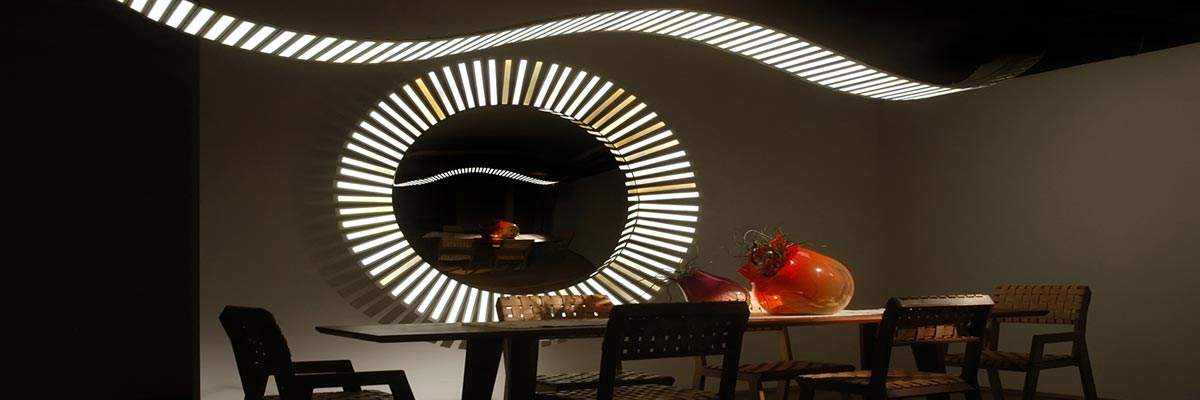GE Announces Breakthrough For Low-Cost Organic LED Production
Energy for lighting is one of the main resource hogs around the world. Staring at an image of the earth at night, it doesn’t take much to see how dependent we are. The recent shift to the CFL bulb has helped ease the burden of paying for energy costs, but its role in the lighting world may only be a stepping stone to the next, great efficient successor: the LED.
LEDs (or Light-Emitting Diodes) will slowly become the lighting standard over the next decade. But light bulbs won’t be the only products to take advantage of their efficient properties. A variety called OLED (or Organic Light-Emitting Diode) are thin, organic materials sandwiched between two electrodes, which illuminate when an electrical charge is applied. This technology is behind all those cool flexible displays and electronic ink displays we’re always seeing. They’re so thin, that they could be applied to rooms as a type of wall paper to glow at the touch of a finger or when someone enters the room. Till now, the process of commercially manufacturing OLEDs has remained expensive. However, a recent breakthrough from GE hopes to lower the cost-barrier and show that OLED can be created “roll to roll”. From the article,
Since the early days of OLED research, people have said that OLEDs could potentially be made at very low cost because they don’t require expensive semiconductor manufacturing techniques. The ultimate low cost fabrication method would be a continuous “roll-to-roll” process like what is done in newspaper printing. We’ve been working to make this happen for the past 4 years. This means that we’ve been working to develop OLED device designs and fabrication processes that are compatible with roll-to-roll processing and to design and build individual equipment modules and then integrate them into a working line.
Needless to say, the group behind this project at GE were successful at overcoming the manufacturing challenges. We’re now another step closer to devices such as organic photovoltaics for solar energy conversion, sensors and roll-up displays. The biggest obstacle that remains is improving the lifetime of OLEDs, since the organic materials are very sensitive to outside elements; especially water.






